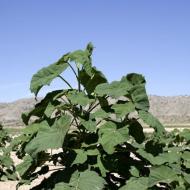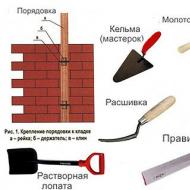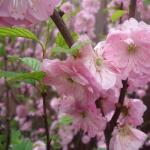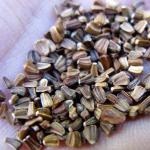
Mylnyanka description of the plant. Soapwort: flower description, planting and care
Mylnyanka - this name has been familiar to us since childhood. At my grandmother's, in the village, one could dig up an inconspicuous flower, wet its root and watch how a soapy foam forms. Indeed, the plant cannot be called ordinary. It is not only a charming flower that adorns our gardens, but also a medicine, as well as a raw material for the cosmetic industry. In addition, the soapwort is famous for its unpretentiousness, so even an inexperienced, novice gardener can grow it on his site.
In ornamental floriculture, the plant is most often used as a perennial flowering groundcover, and the first varieties of soapwort were bred at the end of the 17th century. Its bright dense inflorescences of pink, purple or cream tones are crowned with thin shoots, decorated with a shock of delicate rich green leaves.
Mylnyanka - the name comes from the literal translation of the Latin word "sapo" - soap. The second, less common, name of the perennial is saponaria. Among the people, the flower has received several nicknames: “soap root”, “dog soap”, “chistuha”, “white carnation”.
As mentioned above, saponaria has received wide practical application based on the properties of saponin, an organic compound found in roots, shoots and leaves:
- First of all, soapwort is known as a medicinal plant rich in vitamins and useful organic compounds. Decoctions and infusions, taken orally, treat metabolic disorders, diseases of the stomach, intestines, and lungs. The plant is famous for its expectorant, anti-inflammatory, diaphoretic and laxative properties. The gruel from the leaves and roots is also used externally, for the treatment of dermatitis, eczema and scaly lichen.
[!] Consult your doctor before treatment with soapwort preparations! The plant is poisonous, the wrong dosage can provoke poisoning, manifested in nausea, vomiting and headache.
- Saponaria is also used to treat pets as an antihelminthic.
- In household chemicals, saponin is used as a stain remover and detergent for delicate fabrics.
- Halva and Turkish delight are prepared from some plant species.
- In addition, soapwort is used in cosmetics based on organic and plant products.
Here is such an unusual, beautiful and useful plant you can plant on your site. But in order to create the best conditions for the soapwort, it is worth getting to know her better.
Botany classifies the genus Saponaria (lat. Saponaria) to a large family of carnations (lat. Caryophyllaceae), and its closest relatives are the well-known carnation, adonis and gypsophila. All species united in a genus have several common features. These are herbaceous plants, perennial, rarely annual, with erect stems, oppositely arranged leaves of various shapes: lanceolate, oval, spatulate, etc. The flowers, depending on the variety, are painted in shades of pink, white, lilac, red and are collected in inflorescences in the form of a shield or panicle. The total height of the soapwort varies between 5-80 cm.
In nature, saponaria is found mainly in the mountainous regions of Europe (Alps, Pyrenees), on the Mediterranean coast and in Asia Minor. In Russia, certain types of soapwort grow in the European part of the country, the mountains and foothills of the Caucasus, as well as in Siberia.
Types and varieties of soapwort
The total number of species that make up the genus Saponaria is not so large - about 40. And even less adapted to the conditions of ornamental cultivation. To date, no more than 10 species have been cultivated, but work on plant breeding continues. The most popular types of soapwort among gardeners are:
Soapweed officinalis(lat. Saponaria officinalis). Tall (up to 90 cm) plant with numerous densely leafy branched stems, bare or covered with a short nap. The shape of the leaves is oblong-oval. Large five-petal flowers are collected in inflorescences, their petals are painted in all sorts of shades of red, pink and white.
The species has become widespread as an ornamental and medicinal crop and is ubiquitous in home gardens in central Russia. This large flowering plant not only looks impressive, but also has an accommodating disposition, without causing much trouble to its owner. In addition, the medicinal soapwort smells great, attracting insects that pollinate it with its delicate aroma.
The most popular varieties of saponaria officinalis can be called:
- "Flore Pleno" (Flore Pleno) - differs in delicate, creamy-pink, terry inflorescences.
- "Betty Arnold" (Betty Arnold) - double, snow-white flowers on long stalks.
- "Variegata" (Variegata) - a variety whose main value is the leaves decorated with a colorful pattern of shades of green.
- "Dazzler" (Dazler) is another variegated variety with pink flowers.
 M. "Flore Pleno", M. "Betty Arnold", M. "Variegata"
M. "Flore Pleno", M. "Betty Arnold", M. "Variegata" - "Alba Plena", "Rubra Plena", "Rosea Plena" (Alba Plena, Rubra Plena, Rosea Plena) - a group of ornamental varieties with dense dense inflorescences of different shades: white, pink, purple.
 M. "Alba Plena", M. "Rubra Plena", M. "Rosea Plena"
M. "Alba Plena", M. "Rubra Plena", M. "Rosea Plena" Soapweed basil leaf(lat. Saponaria ocymoides) - a classic, unlike the previous species, ground cover, the maximum height of which is only 20 cm. Soft long shoots creep low along the ground, forming a soft plant cushion. The elongated leaves have a bright green tint, and pink-red fragrant inflorescences densely cover the ends of the stems. This beautifully flowering perennial came to us from Southern Europe, having perfectly taken root in our conditions.
The most common varieties:
- "Rubra Compacta" (Rubra Compact) - beautiful, bright pink inflorescences, densely covering the shoots.
- "Splendens" (Luxury) - a variety similar to the previous one, but with a more delicate shade of petals.
- "Snow Tip" (Snow top) - snow-white flowers on a bright green background of leaves and shoots.
 M. "Rubra Compacta", M. "Splendens", M. "Snow Tip"
M. "Rubra Compacta", M. "Splendens", M. "Snow Tip" Mylnyanka Olivana(lat. Saponaria x olivana). A hybrid species bred specifically for landing on alpine slides. This is a very low (no more than 10 cm) plant that forms sprawling green curtains with a diameter of at least 20 cm. Large five-petal flowers growing from a glass-shaped bowl are decorated with pink or purple petals.
Soddy Soapweed(lat. Saponaria caespitosa). A beautiful ground cover perennial with a woody base. The total height of the plant is 7-15 cm, the leaves are smooth, elongated, flowers with oval petals have a pale pink color. Due to its small size, like the previous view, it is great for planting in rock gardens.
Mylnyanka Lemperdzhi(lat. Saponaria x lempergii). Hybrid form, characterized by medium (up to 40 cm) sizes. The upright, highly branched shoots are adorned with long narrow leaves and solitary five-petalled flowers ranging in hue from light pink to deep lilac.
 M. Olivana, M. soddy, M. Lemperji
M. Olivana, M. soddy, M. Lemperji Unfortunately, only two soapwort seeds are found on sale: medicinal and basilic. The rest in our country are not widely distributed and are rather exotic, inaccessible to a wide range of gardeners.
The use of soapwort in landscape design
How exactly to decorate your garden with soapwort depends on the type of plant being planted. For example, medicinal saponaria has a rather large size, so it can be planted in the vicinity of the same tall perennials, both flowering (phloxes, dahlias, aconites) and decorative leafy (ferns, decorative asparagus). In the first case, flowers of different shades and shapes will create a bright pattern, and in the second case, delicate soapwort inflorescences will stand out against a background of rich greenery.
[!] Valuable varieties of saponaria officinalis can also be used for cutting, for bouquets.
Soapweed basilicum and other undersized species are planted primarily as ground covers. These plants look especially impressive on alpine slides, in borders and borders, as well as in landscape compositions using stones. Plant partners in such plantings can be other drought-resistant ground cover perennials: Iberis,.
Some useful tips for those who decide to decorate their garden with a useful beauty soapwort:
- Saponaria reproduces well by self-sowing, therefore, in strictly defined landscape compositions, the spontaneous growth of the perennial should be limited, preventing the seeds from ripening.
- Mylnyanka does not tolerate high groundwater. Planting a plant on the shore of a pond is a bad idea. And if the water layer lies close to the surface of the earth throughout the site, the flower bed with the ground cover needs to be slightly raised by arranging an embankment or a hill.

Mylnyanka: cultivation and care
Saponaria can be attributed to that group of decorative perennials that do not require any special conditions from the grower. If there is no time for careful care, the soapwort can be planted and forgotten about, and even then the unpretentious green beauty will bloom regularly, delighting the eye with bright colors.
However, there are still some subtleties of caring for a beautifully flowering groundcover.
Location, soil
You can grow soapwort in almost every corner of your garden; the plant will take root both in the open sun and in partial shade. The only exception is heavily shaded areas, although saponaria will grow in such places, it will bloom poorly, and its shoots will stretch ugly, trying to find the sun. It is best to plant a perennial in the brightest southern area, saponaria is not afraid of burns and will feel great in the hot sun.
When planting soapwort, you should pay attention to the composition of the substrate. In nature, the plant can often be found in mountainous areas, where the soil is poor and saturated with lime. And in our gardens, the land, on the contrary, is fertile and rich in humus. To make it looser (water and breathable) before planting saponaria, it is worth adding a certain amount of clean coarse sand or small pebbles.
Too acidic, unsuitable for planting soapwort, soils can be limed. To do this, use lime fertilizers (dolomite, calcite, slaked lime), making them every 5-6 years in spring or autumn. As a result of liming, not only high acidity is neutralized, but also the calcium content in the substrate increases, which has a beneficial effect on plant health.
Watering, feeding
Soapwort, like all alpine plants, does not need a lot of moisture. Moreover, excess stagnant water can cause root rot. That is why it is not specially necessary to water the saponaria, it has enough rain.
The same applies to plant nutrition - saponaria receives all the necessary minerals from the soil. Thoughtless fertilization will only harm the perennial. So, for example, too much will lead to a rapid growth of green mass to the detriment of flowering.
Flowering, shaping and pruning
Soapweed has one indisputable advantage - the plant is able to bloom almost all summer. The first buds appear at the end of June, and the last - at the end of August. In order for the perennial to bloom again, faded shoots can be removed, thus stimulating the emergence of new ones. In addition, the timely removal of peduncles will prevent the formation of seeds and will not allow the soapwort to reproduce spontaneously by self-sowing.

At the end of autumn, after the first frosts, the shoots of saponaria must be cut off, this will help the plant prepare for the onset of cold weather.
Another feature of the soapwort is that old (5-6-year-old) specimens lose their decorative appearance: the shoots grow and grow bald, and the dense curtains fall apart, exposing ugly bald spots in the center. Such plants should be rejuvenated by dividing them or rooting cuttings.
Wintering
The resistance of saponaria to winter frosts depends on its type. So, for example, the soapwort is able to withstand temperatures down to 30°C, while the soapwort is much less frost-resistant and, as a rule, freezes out in the northern regions.
[!] When growing basil-leaved saponaria in areas with severe winters, its flower stalks should not be cut off. Even if the plant freezes, the ripened seeds will give new young shoots the next year.
In order to avoid damage, especially valuable, rare varieties of hybrid soapwort can be covered for the winter. For this, dry fallen leaves, spruce branches or a special covering material are suitable.
reproduction
Propagating saponaria is very simple, you just need to choose the most convenient method from several. You can get young perennials using:
- seed,
- cuttings,
- root division.
seeds
Soapweed seeds are quite common on the market. They are sown:
- In October, in open ground;
- In March for seedlings;
- In May in the open ground.
If possible, sowing is best done in the fall. So the seeds will undergo natural stratification (hardening) and will sprout more amicably in the spring. However, it is not forbidden to plant soapwort seeds in the spring, especially since they go on sale already prepared.
Whichever method you choose, the agricultural technology for sowing saponaria is the same. First of all, you need to mix the soil with a small amount of sand, making it looser, and gently moisten it with a spray bottle. Then the seeds need to be scattered over the surface of the substrate and sprinkled with clean, dry sand on top. Seeds should not be planted deep; due to their microscopic size, they may not sprout. The optimum temperature for the emergence of sprouts is 20-22°C.
After 3-4 leaves appear on the seedlings, the seedlings must be planted in open ground (if they were sown on seedlings) or thinned out. The distance between individual specimens should be at least 30 cm. In the future, the bushes will grow and cover the entire free area of \u200b\u200bthe earth.
Cuttings and division of the root
Saponaria can be propagated in other ways, for example, by cuttings. To do this, in the spring or early summer, before flowering, the apical cuttings are cut off, from which the lower leaves are removed, leaving only 2-3 upper ones, and then they are planted in a shaded place. After the appearance of the roots, the cuttings are carefully dug up and, together with a clod of earth, moved to a permanent place.
It is possible to divide the root of an adult soapwort not only for the purpose of its reproduction, but also in order to rejuvenate the plant. The procedure is very simple: the perennial is carefully dug up, the excess earth is shaken off, after which the root is cut into 2-3 parts using a sharp knife for this. Each of the parts must contain a certain number of roots and at least one growth point. Divided plants are planted again in the substrate, in a permanent place.
Pests and diseases
Of the diseases, a fungal infection can be noted, leading to leaf spot. In addition, due to excessive watering, root rot can develop, spreading to the aerial part of the perennial. In both cases, the affected parts should be destroyed, and if the disease progresses, then the entire bush as a whole.
Other insects or diseases of the soapwort are practically not terrible and appear very rarely.
Mylnyanka is a wonderful representative of the kingdom of Flora. It blooms all summer, delighting the eye with bright colors, does not require special conditions and does not annoy the gardener with its whims. In addition, saponaria has medicinal properties and a wonderful aroma. Without a doubt, this plant deserves the closest attention and is worthy of wide distribution in our gardens.
In nature, there are many plants that are able to form foam. This is due to the presence in their composition of saponins - amorphous substances that are highly soluble in water and have the ability to give foamy solutions.
It turns out that the saponin emulsion literally pulls dirt out of clothes and linen: part of the molecule dissolves in water, and part in fat, forming compounds with dirt microparticles that are easily washed out. Solutions containing saponins are used for washing and bleaching especially delicate woolen, silk and other fabrics that are damaged by ordinary soap.
Elderberry, field weed - cockle, tinder fungus, horse chestnut, common bracken, common soapwort ...
What do they have in common? These plants can replace soap.

Saponins are widely distributed in nature, they are found in leaves, stems, roots, flowers, fruits of various plants. These are mainly plants that belong to the lily and amaryllis families. Plants of the nightshade, rannikovy, clove families are also rich in them. These are plants such as soapwort (Saponaria officinalis L), cracker (common tar), adonis (lychnis), panicled bream (gypsophila paniculata), which have saponins in all their parts.
Especially a lot of saponins in the roots. In young plants, they are much less than in old ones, and from the moment of flowering, their number increases significantly. Saponins, unlike soap, do not create an alkaline reaction, which is a big plus.

Among the foam-forming plants in our area, the first place is taken by the medicinal soapwort, which is also called "soap grass", "red soap root", "dog soap". The name of the plant is due to the fact that when the roots of soapwort are rubbed with water, a lush foam is formed, which does not settle for a long time.
Dried and crushed rhizomes are especially well washed, so they are prepared for future use: dried, ground into powder, diluted with water and washed or washed. After such washing, things acquire a pleasant smell and moths do not start in them. Soapwort contains 32% saponin.
The process can be accelerated by heating water: by boiling a small amount of roots for several minutes. In the resulting "essence" you can wash, and bathe, and wash your hair - for the benefit of yourself and without harm to nature. While washing the body with soapwort, do not inhale or taste the foam, as it can cause sneezing.

Gryzhnik naked, popular name "dog soap". Grows on sandy soils, rocky slopes, along the edges of fields, in wastelands, on cliffs of river banks. Distributed throughout Europe. The leaves of the hernia naked, when rubbed with water, give a soapy foam, which perfectly washes and softens hands, silk and woolen things can be washed in it.
Adonis, white dawn - a plant of the clove family, which is also called "wild soap", "Tatar soap", "boyar or lordly arrogance" - Lychnis alba. Lychnis from the Greek word lychnos - lamp, torch.

The white flowers are fragrant, bloom at night and are visible far in the dark. Its roots have long been used to remove grease from laundry and grease stains from clothes, as well as for washing hands. It is best to use powder from the roots of this plant.
Smolevka
Smolevka-flapper belongs to the clove family. The white flowers of this plant have a swollen calyx that pops well when pressed. Has a sticky stem. All parts of the plant, including the roots, are used as soap.
Licorice also belongs to foaming plants. The powder obtained from its roots is able to give abundant foam in combination with water.
As soap, a tinder fungus that grows on the trunks of larch trees is also used, it is called “leaf sponge”. For washing use only the inner fabric.

In Rus', it has long been used instead of soap. Its underground parts contain a lot of potassium. Rhizomes lather well and are absolutely harmless.
Soap tree, which is native to the state of Kentucky, but sometimes also found in Ukraine. It is called the Kentucky coffee tree, it was brought to the Soviet Union in the 60s of the XX century. as an ornamental tree to decorate cities. But it has not received wide distribution in landscaping, and therefore today it is found in green spaces in the form of single specimens.

Bunduk is very similar to acacia (Gledichia) in the external form of fruits and leaves, only Bunduk leaves are larger than those of acacia. This plant belongs to the legume family.
Bunduk lathers green mass in fruits.
Nice smell! Pods hang on the tree all year round - you need to wash your hands, tear mine too. Removes grease very well. They can wash, wash their hair and wash things. The fruit is shaped like a dumpling. The entire space inside the "dumpling" is filled with a pleasant shade of green thickened mass - a type of concentrated shampoo. This shampoo is soap. This plant, although a tree, is a legume. It is a relative of the coffee tree, and its fruits are used as a coffee substitute.

In Rus', horsetail has long been used exclusively for economic purposes. Wool was dyed with a decoction of its roots, stones were polished with grass, metals were polished, pewter utensils or ordinary smoked kitchen utensils were cleaned, even wooden floors were washed white. And the secret of the cleaning properties of horsetail was the presence of silicic acid in its stems. It is thanks to this substance that horsetail turned out to be beneficial to health and ended up on the pages of healers' herbalists.
Soapweed officinalis (arapka, white star, white carnation, field jasmine, cockle, soapwort, soap root, soap grass, soapwort, articular) is a herbaceous plant of the Soapweed genus, Clove family, used as an expectorant, laxative, diuretic, diaphoretic and choleretic agent.
Chemical composition
All parts of the plant, especially the rhizomes, contain up to 25% triterpene saponins - saponic acid, saporubin, saponarozide (it is they who foam in water like soap, hence the name of the herb), as well as ascorbic acid, pectins, saponarin glycoside.
In addition, the roots contain tannins, mucus, essential oil, resins, mineral elements (including manganese, copper, zinc, calcium), carbohydrates (saponarose, gentiobiose, oligosaccharides).
Ascorbic acid and flavone glycoside saponarin were found in the leaves, and flavone glycoside was found in the grass.
Beneficial features
The most valuable properties of soapwort officinalis:
- Antibacterial;
- Mucolytic;
- expectorant;
- Antitussive;
- Anti-inflammatory;
- Laxative;
- diaphoretic;
- Choleretic;
- Enveloping;
- Antirheumatic.
Indications for use
Given the listed properties of soap grass, it is most often used in the treatment of the following diseases:
- Bronchitis, whooping cough, pneumonia - diseases accompanied by a painful cough;
- Jaundice;
- Edema of hepatic and renal origin, dropsy;
- Viral diseases caused by certain gram-positive and gram-negative microorganisms;
- Colds;
- Diseases of the stomach and intestines, especially flatulence, nausea;
- Diseases of the kidneys, liver, spleen;
- Rheumatism;
- Joint diseases, gout;
- catarrh of the nasopharynx;
- Metabolic disorders, accompanied by skin rashes;
- Dermatological diseases - lichen scaly, boils, ulcers, scabies, skin manifestations of scrofula;
- Toothache, inflammation of the oral cavity, periodontitis.
Contraindications
Soapweed officinalis is a poisonous plant, so preparations based on it must be taken orally with extreme caution. You shouldn't do this on an empty stomach.
Saponaria officinalis home remedies
- Root decoction: finely chop the root, soak for 5-6 hours in water, draining the foam several times, and dry. 1 tsp raw materials pour 1 cup boiling water, cover and boil for 30 minutes in a water bath, remove from heat, leave for 20 minutes and strain. Take inside for rheumatism, jaundice, tuberculosis, inflammation of the spleen and other diseases in which the liver and spleen are saturated with toxins - 2 tablespoons each. 3-4 times a day after meals. The same decoction can be used to gargle with sore throat and inflammatory diseases of the oral cavity;
- Root infusion: pour the root with cold water, leave for 1 hour, then drain the water, pour new water for another 1 hour. Pour 1 tsp. raw materials 1 cup boiling water and insist for 4 hours. Take as a choleretic and diuretic ¼ cup after meals 3 times a day;
- Tea for cough: 1 tsp (with top) rhizomes and herbs pour 1 cup boiling water, insist for several hours, then bring it to a boil, squeeze and strain. Take orally 2 cups per day. The same remedy can be used for compresses and skin washes, diluted with chamomile infusion in equal proportions, for eczema, furunculosis and scaly lichen;
- Means that improves metabolism: pour 50 g of roots with 1 liter of boiling water, boil for 10-15 minutes, insist and strain for 10 minutes. Take orally 3 times a day for 2-3 tbsp.
The plant soapwort medicinal (common) is widespread in the territories of the western part of the CIS, in the Caucasian region, in Central Asian countries, in some zones of the western part of Siberia, as well as in vast areas of southern and central Europe. On the territory of Russia, soapwort is found almost everywhere.
The plant "loves" water meadows, forest edges, valleys and sandy river banks, weedy fields. Often grows near residential buildings. It has long been grown commercially as an ornamental flower.
Description of medicinal soapwort and other plant species
Mylnyanka is a perennial flower, the height of which reaches one meter. But more often there are shorter plants, the average height of which is 60 cm. It has many straight knotty stems, which can be either smooth or slightly rough due to the presence of short hairs on them. The leaves are oblong or oval in shape, the length of each leaf varies from 5 to 12 cm, and the width is from 1 to 4 cm. Each leaf has three longitudinal veins and short bare petioles.
The soapwort flower in diameter reaches 5 cm, has a fragrant aroma. Individual flowers make up the inflorescence of a corymbose-paniculate variety. The color of the petals is most often closer to white, but sometimes pink shades are also found. The fruits are ovoid-oblong capsules. The seeds of the plant are dark in color and small in size. The flowering period is approximately 4 months - June - September. Seeds reach maturity at the end of August.
Soapweed basil (the most common variety is “moon dust”) is considered one of the most unpretentious plants, which is often used in landscape design. It is a low-growing thicket resembling a lush grassy carpet. Shoots spread along the ground, forming cushions of greenery. With proper planting, the basil-leaved soapwort can grow in the same place for up to eight years. Differs in abundant flowering in the summer. The flowers are small, lilac-pinkish in color, have five petals, a pronounced fragrant aroma is characteristic.
Soapweed basil does not require special care. It grows well on medium-fertile, non-acidic, breathable loamy soils. The only condition: for the most abundant flowering, the soil should not be waterlogged, otherwise dampening may occur. For the winter period, the plant does not need to be covered. Reproduction is possible both by dividing the bush in the autumn, and by cuttings in the summer or by seeds in late spring.
The soddy soapwort is similar to the basil leaf, but differs somewhat from it in the height of the pillows, they reach a maximum of 15 cm in height and have a more saturated dark pink hue. Great for use as design elements in borders.
Useful properties of the plant soapwort officinalis
Due to the content of a huge amount of saponins, all parts of the plant, especially the soapwort root, have the ability to foam like real soap, popularly it is called "dog soap". Due to this property, the foamy solutions of the plant have been widely used as a means for cleansing the skin, hair care, as well as a washing agent for removing dirt from fabrics such as silk or natural wool.
In veterinary medicine, the herb of medicinal soapwort is widely used as an antihelminthic and antiemetic drug.
In cooking, plant roots are used, which are added to the composition of highly carbonated drinks, champagnes, beer, and halva.
In developed European countries, the presented plant has been widely used in official medicine. In the post-Soviet space, due to its toxicity, the soapwort extract is used only as a separate component, not as part of medical preparations. However, due to its healing properties, this herb is often used in remedies prepared according to traditional medicine recipes.

Among the variety of useful qualities of soapwort, the main ones can be distinguished:
- antirheumatic
- diuretic
- expectorant
- choleretic
- laxative
Also, recipes that include soapwort help well in the treatment of skin diseases.
What diseases does it help to cope with?
Healing properties are used in the treatment of a wide range of various diseases, including:
- rheumatism
- cholecystitis
- pathology of the respiratory tract (bronchitis, whooping cough, pneumonia, prolonged suffocating coughing fits)
- jaundice
- edema caused by disorders in the liver and kidneys
- constipation
- gout
- prostatitis
- seborrhea
- herpetic skin lesions
- lichen of the scaly variety
Decoctions of medicinal soapwort are often used to relieve toothache, gruel and lotions - in the treatment of skin diseases, root infusions - with purulent tonsillitis. Fresh leaves of the plant are used in the form of lotions as an antibacterial agent in the treatment of open wounds.
Contraindications to the use of the plant
As such, there are no contraindications to the use of soapwort, but it is important to know that any part of the plant, whether it is a root, stem or inflorescence, is poisonous, since saponin (a substance by which the plant is able to soap) is a toxic component. For this reason, internal use should be done with the utmost care to prevent overdose. The poison is not deadly, but can cause problems in the gastrointestinal tract, kidneys, irritation of the mucous membranes of the respiratory tract. The characteristic symptoms of poisoning are nausea and vomiting, accompanied by sharp, colicky pains in the abdomen, as well as coughing fits. When such signs of intoxication of the body appear, it is imperative to stop taking the soap and resort to the use of activated charcoal in combination with a two percent solution of sodium bicarbonate. This mixture will cleanse the stomach of toxins. After washing, it is necessary to take drugs that envelop the walls of the stomach for three days.
Soapweed is a popular ornamental plant in horticulture. It is cultivated to decorate borders, flower beds and other rocky landscape forms. Varieties of this plant are unpretentious to growing conditions in open ground, but have some features in planting and care.
The soapwort or saponaria got its name because of the roots from which soap is made. The plant belongs to the clove family. In the wild, it grows on the rocky slopes of the mountains.
In Russia, two types of soapwort, which are cultivated in open ground, have become widespread:
- basilic-leaved;
- medicinal.
medicinal form of saponaria refers to perennials. It has excellent decorative characteristics:
- height - 90 cm;
- leaves - 4–12 cm, lanceolate;
- stems of a green or green-red hue;
- flowers - pure white or with a pinkish tinge, from 5 petals collected in the shape of a star;
- flower calyx - goblet;
 Soapweed officinalis
Soapweed officinalis - flower size - large: 2.5 cm in diameter;
- flowers are collected in paniculate corymbose inflorescences.
Attention! Medicinal soapwort blooms from July to September. The life cycle of each flower is three days. The plant is very fragrant, especially with the onset of evening coolness.
Basilic Saponaria- an evergreen herbaceous plant. During flowering, it looks like a lush and compact pillow. Decorates any, even rocky landscape:
- height - 40 cm in nature, but bushes up to 10–20 cm are formed on the home plot;
- stems - branched and creeping, with a slight reddish tint;
- leaves - lanceolate, medium-sized;
 basil-leaf soapwort
basil-leaf soapwort - flowers consist of 5 petals, slightly fragrant;
- color - red or pink, sometimes - pale shades;
Attention! With proper care, this type of saponaria grows quickly. Flowering occurs in 2 stages: in May-June and late August. During these periods, the tops of the branches of the plant are abundantly covered with inflorescences that look beautiful live and in the photo.
Planting a plant at home
Growing any type of saponaria is possible only in an open sunny area. In extreme cases - in partial shade. The soil should be slightly alkaline or neutral. Not necessarily fertile, but loose and light. Otherwise, the accumulation of moisture at the roots will cause them to debate.
Planting methods:

Saponaria care
In the process of growing, this plant is undemanding to watering. It doesn't like too much water. The culture needs moderate watering, with an increase in the dose of moisture during drought. Saponaria care is a combination of soil loosening and weed control. Removing faded inflorescences stimulates the plant to bloom again, though less luxuriantly. In autumn, the plant is pruned: medicinal species - by 1/3, basilic - up to a height of 5 cm.
Advice. The soil around the plant is sometimes covered with a thin layer of gravel, crushed stone or expanded clay. This helps in the fight against weeds and emphasizes the beauty of flowering. In cold weather, the plant does not need watering.
Fertilizer and feeding soapwort
In the care of saponaria, it is not necessary to apply fertilizers. The main thing is to monitor the density of the soil. If your site has heavy clay soil, add compost mixed with sand in the spring.
Some gardeners feed the plant 1-2 times a year with mineral fertilizers. The soapwort responds positively to fertilizing with phosphorus before the start of the growing season, after the snow melts.
Advice. Before planting the plant, fertilizing the soil with calcium will be effective.
Plant transplantation and propagation
In one place, with proper care, saponaria grows no more than 8 years. Then it needs to be transplanted. In October-November, carefully remove the plant from the ridge and plant in a new place. Reproduction occurs by seeds, cuttings and division of an adult shrub.
 Soapweed can grow in one place for many years.
Soapweed can grow in one place for many years. Division is considered by some gardeners to be a mandatory growing procedure. It should be done annually in the spring. Indeed, during the season the plant can grow greatly. To separate the bush, carefully cut it with a shovel in a vertical plane.
Getting seeds for crop propagation is easy. They appear in ovoid capsules after flowering. Dry them after harvesting, and in the spring plant them under seedlings or immediately in the fresh air. Seeds can sprout on their own, falling to the ground next to the flower.
Advice. To get a cutting, cut off the top of the branch and remove the lower leaves.
Diseases and pests of saponaria
Decorative culture is resistant to many negative factors. For example, it almost never freezes in open ground without shelter. The critical temperature for it is -21°C. But in a snowless winter, it is better to warm the plant.
Of the pests, a garden scoop can choose a flower. Its caterpillar is gray in color, with a red or yellow tinge. A medium-sized butterfly with dark brown front wings is active in the first half of summer. The most effective way to care for the plant in this case is to manually collect pests. Mylnyanka in landscape design
Soapweed is not capricious in comparison with other ornamental crops. Species adapted to our climate perfectly take root on the site and respond positively to reproduction. With a little effort, you will get beauty in your area.
Mylnyanka: video
















